- Vehicle Guide
- Passenger cars
- Estate
- Electric
- 4x4 SUVs
- Suzuki Jimny 4x4
- Dacia Duster 4x4
- Suzuki Vitara 4x4
- Suzuki Vitara auto 4x4
- Dacia Bigster 4x4
- Kia Sportage 4x4 Auto
- Kia Sportage PHEV 4x4 auto
- Mitsubishi Outlander PHEV 4x4 auto
- Toyota Rav4 4x4
- Toyota Rav4 4x4 auto
- Kia Sorento 4x4 auto
- Toyota Landcruiser 150 4x4 auto
- Toyota Landcruiser 250 4x4 auto
- Landrover Discovery 5 4x4 auto
- Landrover Defender 4x4 auto
- Prestige
- Minivans
- 4x4 Camper
- Motorhomes
- Driving in Iceland
- Our services
- Locations & Hours
- Travel Inspiration
- South Iceland: A complete guide
- Reynisfjara Beach in Iceland - Your Guide to a Safe Visit
- Best Times to Visit the Golden Circle in Iceland
- North Iceland: A Complete Guide for Drivers
- East Iceland A Complete Guide for Drivers
- West Iceland The Complete Driver’s Guide
- Your Ultimate Guide to Exploring Iceland’s Ring Road
- Driving the Diamond Circle in Iceland: Your Ultimate Guide
- Driving Iceland's Golden Circle: Your Ultimate Guide
- A 10-Day Itinerary in Iceland: Tips + Ideas
- The Perfect Itinerary for 7 Days in Iceland
- The Best Time to See the Northern Lights in Iceland with a Rental Car
- Renting a Camper in Iceland: The Complete Guide
- Getting to Iceland: A Comprehensive Guide on How to Reach the Land of Fire and Ice
- Nature Bath Locations in Iceland: A Complete Guide
- Iceland with Kids: A 5-Day Self-Drive Itinerary
- Winter Driving in Iceland: A Comprehensive Overview for Foreign Tourists
- The Total Solar Eclipse in Iceland – August 12, 2026
- Exploring Iceland's National Parks on a Self-Drive Adventure
- Exploring Iceland's Wonders: A Comprehensive Guide to Activities and Car Rentals
- Springtime in Iceland – Your Comprehensive Travel Guide
- Exploring Iceland's Most Popular Highland Routes
- The Pearls of Westfjords: The Ultimate Guide
- Exploring Iceland's Hidden Gems | Off-the-Beaten-Path Adventures
- Driving in Iceland in June: Tips for a Safe and Scenic Summer Road Trip
- Driving in Iceland in July: Tips, Routes & Rentals
- Driving in Iceland in August: Late-Summer Freedom on the Open Road
- Guide to Skaftafell Iceland Self-Drive A Journey Through Fire and Ice
- Eco-Friendly Road Trips in Iceland, Sustainable Travel Tips
- Photographer’s Paradise Top Scenic Drives in Iceland for Stunning Shots
- Iceland's Folklore and Legends A Road Trip Through Mythical Sites
- Iceland’s Midnight Sun and How to Make the Most of 24-Hour Daylight
- Exploring Iceland’s Viking Heritage: Top Historical Sites
- Chasing Waterfalls: A Road Trip to Iceland’s Most Spectacular Cascades
- Iceland's Volcanic Wonders: A Self-Drive Tour of Active and Dormant Volcanoes
- Tee Off in the Land of Fire and Ice: A Guide to Golfing in Iceland
- Birdwatching in Iceland: Puffins and Beyond
- Iceland’s Diverse Beaches: Beyond the Black Sands
- Icelandic Horses: The Unique Breed of the North
- Beyond the Ring Road: Iceland’s Hidden Scenic Drives
- Iceland’s Ice Caves: A Year-Round Adventure
- Wildlife Watching in Iceland: Where and When to Go
- Iceland’s Hidden Hot Springs: A Self-Drive Guide to Secret Soaks
- Navigating Iceland’s Weather: What to Expect Each Season
- Tröllaskagi Peninsula: Iceland’s Mountainous Marvel — A Scenic Road Trip with Höldur
- Mastering Iceland's Roundabouts: A Driver’s Guide
- Essential Tips for Renting a Car in Iceland
- Navigating Iceland’s One-Lane Bridges: Your Guide to Safe and Scenic Crossings
- Exploring Iceland’s Film Locations by Rental Car
- 5 Must-Visit Destinations Within Two Hours of Keflavík Airport
- Seasonal Car Rental Tips for Iceland’s Summer Festivals
- Understanding Iceland's F-Roads: How to Drive Safely Into the Highlands
- What Makes Iceland Unique: Top 15 Highlights for an Unforgettable Journey
- Driving and Hiking in Harmony: Explore Iceland's Natural Wonders with Höldur Car Rental
- Best Car to Rent in Iceland?
- Avoiding Common Car Rental Mistakes in Iceland
- Making Your Car Rental in Iceland Child-Friendly: Tips for Stress-Free Family Travel
- Exploring Akureyri, Iceland’s Northern Gem, with EasyJet and Europcar
- Renting a Manual or Automatic Car in Iceland
- Discover the Arctic Coast Way in Iceland with Höldur Car Rental
- How to Save on Fuel Costs During Your Iceland Road Trip
- Electric vs. 4x4 Rentals in Iceland: Which is Right for Your Trip?
- Top Scenic Detours Off Iceland's Ring Road
- Top Safety Tips for First-Time Drivers on Iceland’s Roads
- Cultural Pit Stops Along Iceland’s Ring Road
- Your Guide to Exploring Stuðlagil Canyon by Car: Iceland’s Basalt Beauty Awaits
- Day Trip Ideas From Reykjavik by Rental Car
- Visit Glymur Waterfall: The Ultimate Self-Drive Adventure from Reykjavík
- Discover the Volcanic Wonders of Lake Mývatn by Car
- Discovering the Magic of Snæfellsnes Peninsula by Car
- Your Self‑Drive Guide to Gullfoss Waterfall
- A Guide to Seljalandsfoss Waterfall in Iceland: Explore by Car
- Exploring Reykjanes Peninsula A Self Drive Guide
- Exploring Iceland Landmannalaugar by 4x4
- A Beginner's Guide to River Crossings in Iceland
- Best Car Rental Offers for Iceland’s Summer Adventures
- Your Self‑Drive Guide to Þingvellir National Park
- Your Ultimate Guide to Geysir, Iceland: All You Need to Know
- How to Pay for the Vaðlaheiðargöng Tunnel
- Your Guide to Visiting Jökulsárlón Glacier Lagoon
- The Diamond Beach in Iceland: A Sparkling Wonder Worth Visiting
- Parking fines in Iceland: how to pay and what to do if you receive one
- Where to find overnight parking in Reykjavík: a local’s guide for travellers
- How to park for free in Reykjavík: tips to save on your Iceland trip
- How to pay for parking in Reykjavík - A friendly guide for drivers in Iceland
- Game of Thrones Filming Locations in Iceland: A Self-Drive Guide
- How to Choose the Right Car Rental at Keflavík Airport
- Flying Within Iceland: Your Guide to Domestic Routes and Regional Airports
- Top 3 Must-See Attractions on Iceland's Golden Circle
- Hidden Gems Along the Golden Circle Route
- Your Essential Guide to Iceland: Currency, Culture, and Car Rental Tips
- How to Plan the Perfect Golden Circle Self-Drive Tour
- The Comprehensive Guide to Rental Car Sizes at Keflavik Airport
- Húsafell & Hallmundarhraun: Hidden Lava Field Adventures by Car
- Iceland Weather by Month: What to Expect and How to Drive Safely with Holdur Car Rental
- A Guide to Iceland’s Quirky Roadside Attractions
- Exploring Iceland’s Lava Tubes | Self-Drive Cave Adventures with Höldur Car Rental
- Coolcation in Iceland: Self-Drive Your Summer Escape to the North
- Driving Iceland’s Coastal Roads: A Guide to Lesser-Known Peninsulas
- Top Tips for Driving in Iceland Safely Year-Round
- The Best Rest Stops and Viewpoints Along Iceland's Ring Road
- Driving in Iceland in September: Embrace the Autumn Adventure
- Your Guide to Exploring Fjaðrárgljúfur – South Iceland’s Fairytale Canyon
- Explore Reykholt on a Self-Drive Tour in Iceland
- How to Choose the Right Insurance for Your Iceland Car Rental
- Hiking Múlagljúfur Canyon: Iceland’s Hidden Gem You Can’t Miss
- Understanding Iceland's Weather and How It Affects Driving Conditions
- Dyrhólaey: A Complete Self-Drive Guide to Iceland's Breathtaking South Coast
- Where to See Iceland’s Tectonic Plates Up Close
- Scenic Journey on Kjalvegur Road 35 Reykjavik to Akureyri
- Guide to Visiting Svartifoss with a Rental Car
- Kerið Crater Lake in Iceland: A Self-Drive Guide
- Your Complete Guide to Stokksnes, Iceland with a Rental Car
- Hengifoss Waterfall in Iceland: The Ultimate Self-Drive Guide
- Your Complete Guide to Visiting Skógafoss Waterfall with a Rental Car
- Into the Heart of Þórsmörk: Iceland’s Valley of Thunder
- Dynjandi Waterfall in Iceland: The Ultimate Self-Drive Guide
- Visiting Ásbyrgi Canyon in North Iceland by Car: A Complete Self-Drive Guide
- Driving in Iceland in October: Embrace the Autumn Transition
- Hraunfossar: Iceland’s Hidden Gem for Self-Drive Travellers
- Barnafoss Waterfall: Iceland’s Raging Cascade with a Legend
- Driving in Iceland in November: Your Complete Guide to a Spectacular Autumn Adventure
- Fishing in Iceland: All You Need to Know
- Öxarárfoss Waterfall in Iceland: A Self-Drive Guide with Höldur
- Life in Iceland: Essential Guide to Living in the Land of Fire and Ice
- People of Iceland - 12 Fun Facts About Icelanders
- Glaumbær Turf Houses: A Self-Drive Guide to Iceland’s Living History
- Húsavík: Whale Watching Capital of Iceland
- Svínafellsjökull Glacier: A Self-Drive Guide to Iceland’s Ice Giants
- Kirkjubæjarklaustur: A Historic South Coast Gem
- Vík í Mýrdal: South Iceland’s Coastal Treasure
- Namaskard: A Self-Drive Guide to Iceland’s Geothermal Wonderland
- Laufás Heritage Site: Where Iceland’s Past Lives On
- Navigating Iceland's Gravel Roads: Tips for a Safe and Smooth Drive
- Iceland's Best Stargazing Spots for Self-Drive Travellers
- Iceland's Best Picnic Spots: Scenic Stops for Self-Drive Adventures
- Top 5 Family-Friendly Hiking Trails Accessible by Rental Car
- 15 Tips for Travelling to Iceland
- How to Plan a Winter Photography Road Trip in Iceland
- Visiting Gljúfrabúi Waterfall — A Self-Drive Guide
- How to Spot Puffins in Iceland: A Self-Drive Adventure
- Your Essential Guide to Winter Tyres and Safe Driving in Iceland
- Iceland’s Most Active Volcanoes: A Self-Drive Guide
- Iceland’s Most Scenic Bridges and River Crossings: A Self-Drive Guide
- Iceland’s Most Instagrammable Spots for Self-Drive Travellers
- How Cold Is It in Iceland During Winter? A Self-Drive Guide
- Explore Dimmuborgir: A Self-Drive Guide to Iceland's Dark Castles
- The Ultimate Guide to Iceland’s Top 5 Waterfalls by Car
- Iceland’s Best Scenic Routes for Autumn Foliage: A Self-Drive Guide
- The Best Time to Visit Iceland for Self-Drive Travellers
- Self-Drive Adventures to Iceland’s Remote Lighthouses
- Selfoss Waterfall Self-Drive Guide: Explore Iceland Your Way
- All About the Icelandic Sheep
- Vestrahorn: A Self-Drive Guide to Iceland’s Stokksnes Peninsula
- Höfn, Iceland: The Lobster Town Self-Drive Guide
- Exploring Arnarstapi: A Self-Drive Guide
- A Guide to Iceland's Seasonal Foods for Your Road Trip
- Hverfjall Crater, Iceland: A Self-Drive Guide
- Self-Drive Guide to Visiting Askja
- A Self-Drive Guide to Visiting Kerlingarfjöll
- A Self-Drive Guide to Gunnuhver Geothermal Area
- Skriduklaustur, Iceland: A Self-Drive Guide to History & Culture
- Your Ultimate Guide to Visiting the Blue Lagoon in Iceland
- Borgarnes, Iceland: Top Things to Do & Self-Drive Guide
- A Guide to Glaciers in Iceland
- Car Rental Insurance in Iceland: What’s Usually Included, What’s Not & How to Choose
- Best Car Models for Iceland’s Terrain: Recommendations by Route
- Solo Traveller’s Guide to Self-Driving in Iceland
- Exploring Iceland’s Arctic Circle: What to See and Do
- How to Plan a Budget-Friendly Road Trip in Iceland
- The History of Iceland’s National Day: A Self-Drive Celebration
- Where to Spot Whales in Iceland: A Self-Drive Guide
- The Diamond Circle vs. The Golden Circle: Which Route is Right for You?
- Embracing a Greener Journey: Sustainability in Iceland
- Granni: A Self-Drive Guide to Iceland’s Neighboring Waterfall
- Háifoss: A Self-Drive Guide to Iceland’s Tallest Waterfall
- Iceland's Best Camping Spots for Road Trippers
- Gjáin: A Self-Drive Guide to Iceland’s Hidden Oasis
- Iceland's Hidden Waterfalls: Beyond the Tourist Trails
- Hjálparfoss: A Self-Drive Guide to Iceland’s Helping Falls
- Seasonal Self-Drive Itineraries in Iceland: What’s Open When?
- Kirkjufell: A Self-Drive Guide to Iceland’s Most Photographed Mountain
- Fjallabak Nature Reserve: A Self-Drive Guide to Iceland’s Rugged Highlands
- Hrafntinnusker: A Self-Drive and Hiking Guide to Iceland’s Obsidian Wilderness
- When to Visit Iceland: Northern Lights and Ice Caves vs. Hiking and Highland Adventures
- Visiting Laugarvatn Fontana Spa with a Rental Car: A Relaxing Icelandic Getaway
- Hvítserkur Rock: A Self-Drive Guide to Iceland’s Dragon of the North
- Skiing in Iceland: A Self-Drive Guide for Winter Adventurers
- Visiting the Mývatn Nature Baths by Car: A Self-Drive Guide
- Visiting Vök Baths in East Iceland: A Self-Drive Guide
- Visiting Skútustaðir Pseudo-Craters: A Self-Drive Guide
- Visiting Hljóðaklettar: A Self-Drive Guide on the Diamond Circle
- The Ultimate Guide to Exploring Reykjavik with a Rental Car
- Visiting Seljavallalaug: A Hidden Gem in South Iceland
- Guide to Sólheimajökull Glacier by Iceland Car Rental
- Eyjafjallajökull: Iceland’s Glacier Volcano
- Ísafjörður, Iceland: Your Ultimate Self-Drive Guide to the Westfjords
- What Continent is Iceland In? A Traveler's Guide
- Katla Volcano: A Guide to Iceland's Sleeping Giant
- The Magic of Icelandic Water: A Traveler's Guide
- A Guide to Exploring Akureyri by Rental Car
- A Self-Drive Guide to the Krafla Volcanic Region
- 12-Day Iceland Self-Drive: The Complete Itinerary
- Hekla Volcano: A Self-Drive Guide to Iceland's Gateway
- Visiting Deildartunguhver: A Self-Drive Guide to Europe’s Most Powerful Hot Spring
- Exploring Borgarfjörður: A Self-Drive Guide to West Iceland
- Exploring Stórurð: A Self-Drive and Hiking Guide to East Iceland
- Visiting the Forest Lagoon in North Iceland: A Self-Drive Guide
- Driving in Iceland in December: Embrace the Winter Wonderland
- Exploring Grábrók: A Self-Drive Guide to Iceland’s Volcanic Crater
- Exploring Látrabjarg: A Self-Drive Guide to Iceland’s Westernmost Point
- Iceland Car Hire Tips for UK Drivers: What You Need to Know
- 4-Day Iceland Winter Itinerary: The Best of the South
- Mount Mælifell: Iceland’s Emerald Volcano
- How Long to Drive Around Iceland? A Self-Drive Guide
- Driving in Iceland in January
- Exploring Djúpavík: A Self-Drive Guide to Iceland’s Remote Westfjords
- What to Wear in Iceland: Tips for Every Season
- Things to Do in Stykkishólmur: A Self-Drive Adventure Through Iceland’s Magical West
- The Secret Lagoon: Iceland’s Hidden Gem of Relaxation and Discovery
- The Silver Circle of Borgarfjörður: Your Ultimate Self-Drive Guide
- Snæfellsjökull: A Journey to Iceland’s Glacier of Legends
- Car Rental Iceland 4x4: Best 4WD Options for Your Trip
- What to See in Iceland: 20 Places You Don’t Want to Miss
- How to Prepare for an Iceland Road Trip
- Your Guide to Visiting Fagrifoss Waterfall by Car
- Exploring Stakkholtsgjá Canyon: A Self-Drive Adventure in Iceland
- Kolugljúfur Canyon: A Guide to Iceland's Hidden Gem
- Exploring Kvernufoss: A Hidden Gem in South Iceland
- Skógar Museum: A Journey Through Iceland's History
- 2 Days in Iceland: The Perfect Itinerary
- Exploring Berserkjahraun: A Self-Drive Guide to Iceland’s Lava Fields
- Driving in Iceland in February: Your Complete Guide
- Iceland Daylight Hours by Month: Planning Your Trip
- Petra’s Stone Collection: A Self-Drive Gem in East Iceland
- Iceland's New Kilometer-Based Road Tax: Everything You Need to Know
- Krýsuvíkurbjarg Cliffs: Self-Drive Guide to Iceland’s Wild Coast
- Brimketill: The Reykjanes Peninsula’s Natural Lava Pool
- Exploring Eldhraun Lava Field: A Self-Drive Guide to Iceland’s Volcanic Marvel
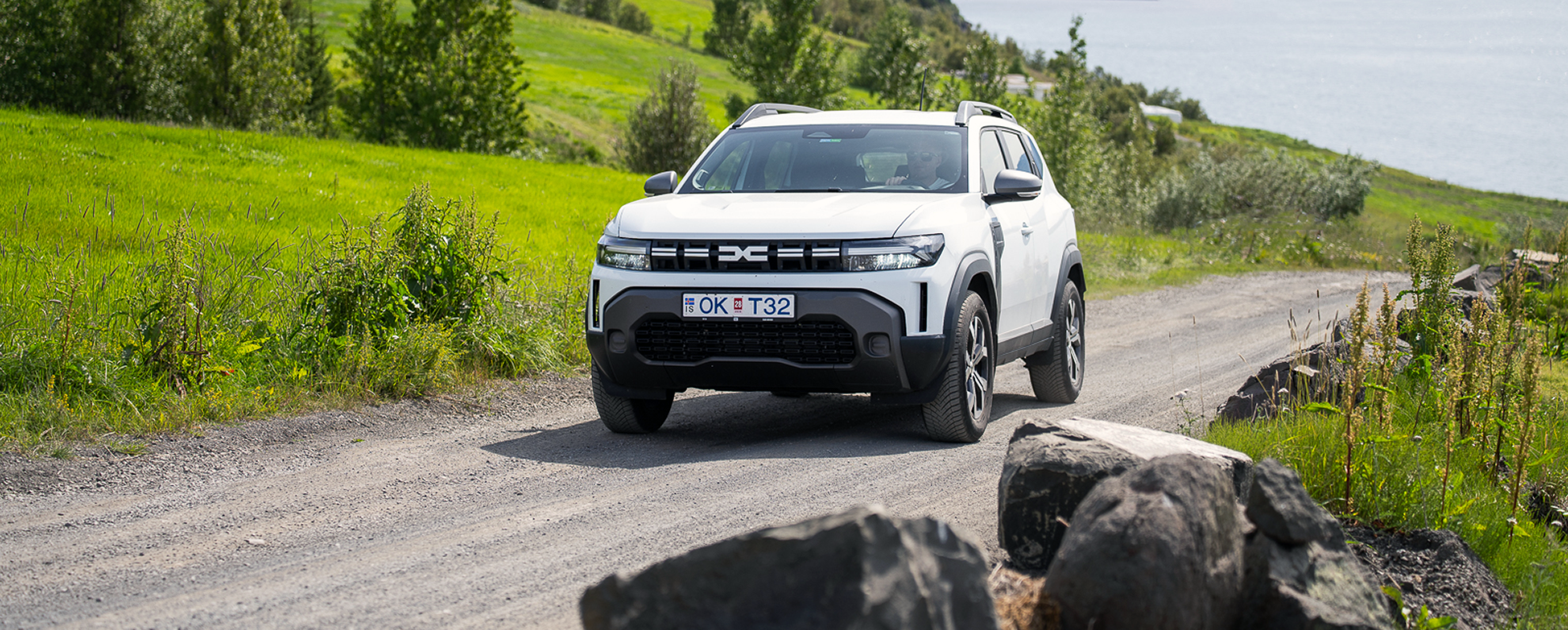
Car Rental Tips
Top Tips for Driving in Iceland Safely Year-Round
15.08.2025
Planning a self-drive trip in Iceland? Excellent choice. Hiring a car gives you the freedom to chase waterfalls at sunrise, linger at hidden hot springs, and reach those far-flung viewpoints that tours skip. But Iceland’s roads, weather, and light can be very different from what you’re used to. This guide brings together Holdur’s expert advice so you can drive with confidence in every season—whether you pick up your car hire at Keflavik International Airport or rent a car in Reykjavik.
What you’ll learn:
- The key differences between paved roads, gravel roads, and Highland F-roads
- Seasonal driving tips for winter, spring, summer, and autumn
- How to plan around Iceland’s rapidly changing weather and daylight
- Practical safety habits that make a big difference on Icelandic roads
- Vehicle, insurance, and equipment choices that suit your route
- Parking, tolls, and essential resources for real-time road info
If you’re ready to rent a car in Iceland, Holdur (Europcar Iceland) operates the country’s largest fleet, with convenient locations at KEF and in central Reykjavik, plus extensive 4x4 rental in Iceland for Highland travel in summer.
See also: What to know about driving in Iceland.
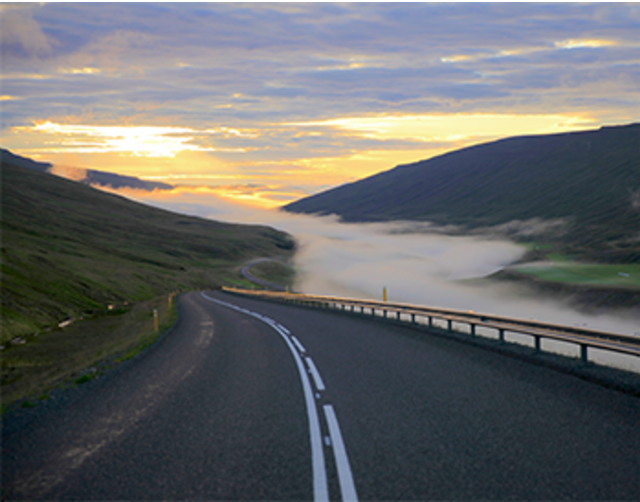
Why hire a car in Iceland?
- Freedom and flexibility: Go at your pace, skip crowds, and reach quieter spots.
- Comfort and convenience: Your own space, your own playlist, and the ability to change plans when the weather does.
- Year-round access: With the right car and advice, you can enjoy Iceland in any season.
Demand peaks in summer. If you’re planning to rent a car in Reykjavik or book Keflavik International Airport car rental, reserve early.
Know your roads: paved, gravel, and F-roads
Paved roads (Primary roads and Route 1)
- What they are: Tarmacked roads connecting towns and villages, including the Ring Road (Route 1).
- Speed limit: 90 km/h in rural areas; 30–50 km/h in towns.
- Year-round travel: Generally open and well-maintained in all seasons, though winter ice and wind still require caution.
Gravel roads (Secondary roads)
- What they are: Unpaved connectors to smaller settlements and farms.
- Speed limit: 80 km/h, but slow right down when transitioning from paved to gravel to avoid skids.
- Year-round travel: Mostly open, but conditions vary with weather. Keep more distance and pass oncoming vehicles slowly to avoid flying gravel.
F-roads (Highland roads)
- What they are: Rough, remote mountain routes through Iceland’s Highlands.
- Vehicle rule: 4x4 rental in Iceland is mandatory; 2WD vehicles are not permitted (and fines apply).
- Seasonal access: Typically closed in winter and shoulder seasons due to snow and river conditions.
- River crossings: Depth and flow change often. No insurance covers river-crossing damage—if you wouldn’t cross on foot, do not attempt it in a car.
More F-road information from Holdur here: A Beginner's Guide to River Crossings in Iceland and Understanding Iceland’s F-Roads: What You Need to Know Before You Go.
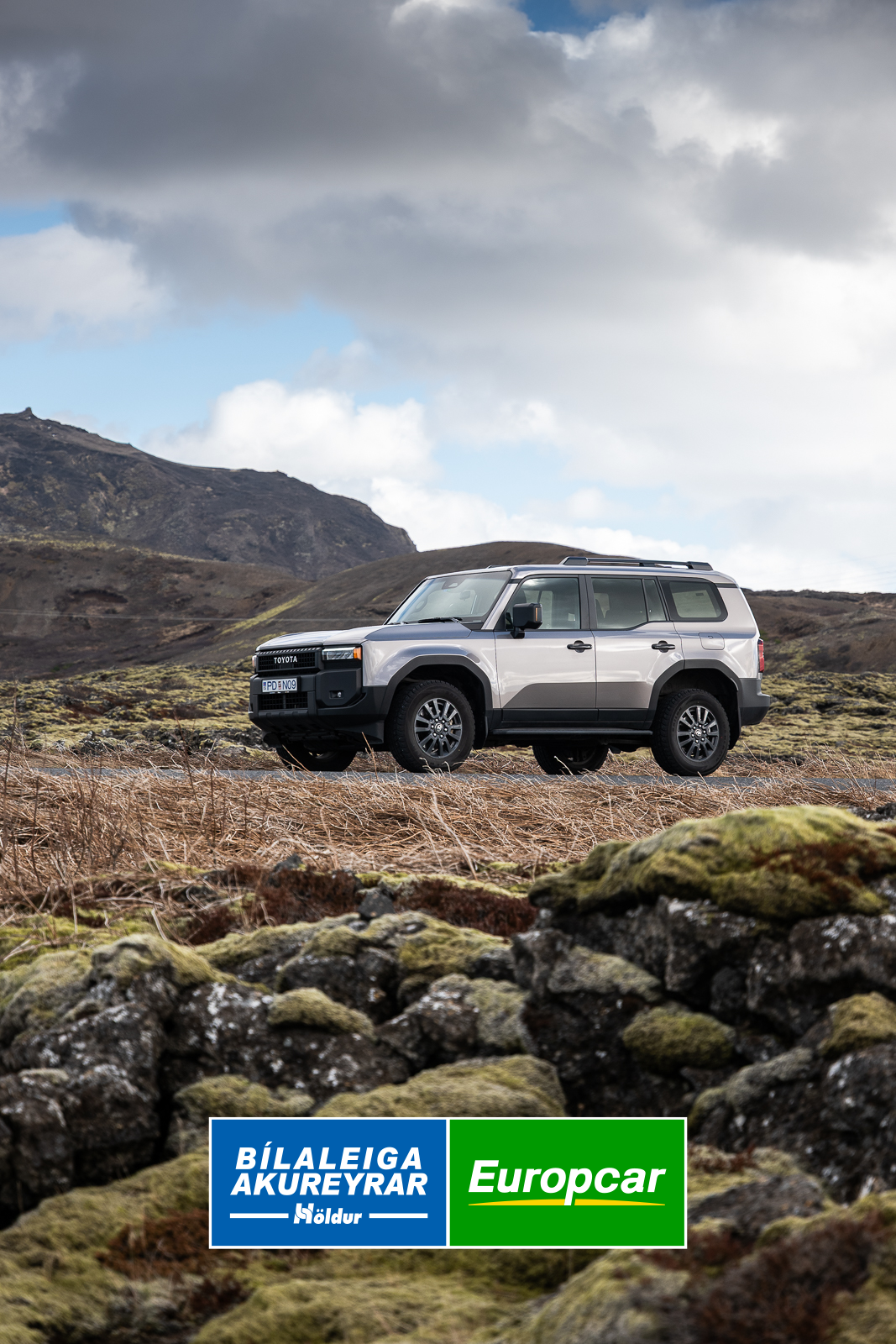
Seasonal driving tips in Iceland
Winter (Nov–Mar): short days, snow, and ice
- Vehicle: Choose a 4x4 SUV if you plan to leave urban areas. Holdur equips all cars with studded winter tyres from 1 Nov to 15 Apr at no extra cost.
- Daylight: Around the solstice, daylight can be limited to 4–5 hours. Plan routes you can complete in daylight.
- Wind and ice: Expect strong gusts and black ice. Reduce speed, increase following distance, and avoid sudden steering or braking.
- Night driving: Best avoided. If you must, drive slowly with headlights on (required by law 24/7).
- Checklist: Keep warm layers, water, snacks, a torch, and a phone charger in the car.
- Discover more in-depth insights in our comprehensive guide: winter driving in Iceland.
Spring (Apr–May): improving conditions, lingering ice in the Highlands
- Weather: Fewer storms, but snow can persist in high areas. Many F-roads still closed.
- Driving: Watch for freeze–thaw cycles that create icy patches in mornings and evenings.
- Wildlife: Sheep and reindeer roam. Slow down and give them space.
Summer (Jun–Aug): the easiest season to drive
- Roads: Clear of snow; F-roads generally open (check before you go).
- Midnight sun: Long daylight hours can tempt overlong drives—schedule rest breaks and don’t drive fatigued.
- Gravel transitions: Slow well before the surface change to maintain traction.
Autumn (Sep–Oct): most changeable season
- Weather: You may experience summer-like days or early storms in the same week.
- Daylight: Shortening fast. Plan shorter drives.
- Prep: Carry layers and check road.is before each leg of your journey.
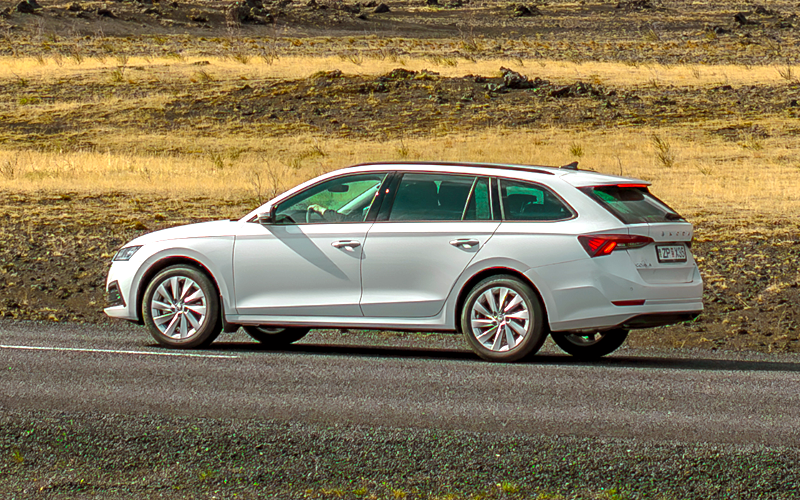
Weather, light, and live updates you’ll actually use
Iceland’s weather can swing from clear to white-out in an hour. Build the habit of checking conditions before every drive.
- Road conditions and webcams: road.is (Vegagerðin). Use it for closures, surface info, and live cams.
- Weather forecasts and warnings: en.vedur.is (Icelandic Meteorological Office). Check wind speeds along your route.
- Safe travel alerts: safetravel.is. Handy for regional advisories.
- Holdur Travel App: Your on-the-road companion with practical info and links in one place.
Tip: If wind warnings look severe, delay travel. Strong gusts can push vehicles—especially high-sided SUVs—off line or damage doors when opened. Always hold onto doors with both hands in strong winds.
On-the-road safety habits that matter
- Lights on, always: It’s the law to use headlights 24/7.
- Seatbelts: Mandatory for all occupants.
- Speed limits: 90 km/h paved rural; 80 km/h gravel; 30–50 km/h in towns—and they’re limits, not targets.
- Two-lane roundabouts: Inner lane has right of way. If you’re in the outer lane and intend to exit, yield to vehicles in the inner lane before leaving the roundabout.
- Pull over to photograph: Never stop in the carriageway. Use designated pull-outs or car parks.
- Single-lane bridges: The first to arrive has priority, but slow down and make eye contact. When in doubt, yield.
- Blind summits: Approach cautiously and keep right.
- Obey closures: “Lokað” means closed. Don’t drive past barriers or closure signs.
- Stay on roads: Off-road driving is illegal and heavily fined. Use marked tracks and car parks only.
Choosing the right vehicle for your route
- City and Ring Road only: A standard passenger car is suitable for paved routes and typical summer itineraries.
- Mixed paved/gravel and shoulder seasons: A compact or mid-size SUV offers more ground clearance and stability in wind.
- Highlands and F-roads (summer only): Book a qualified 4x4 SUV. Confirm F-road permissions and restrictions with Holdur when booking.
- Winter touring: Favour 4x4 with studded winter tyres (included seasonally with Holdur) for added grip and stability.
Popular 4x4 choices for Iceland:
- Dacia Duster: Great value, capable on gravel and many F-roads in season
- Kia Sorento: Comfortable family SUV with strong winter manners
- Toyota Land Cruiser: High clearance and excellent on rougher tracks in summer
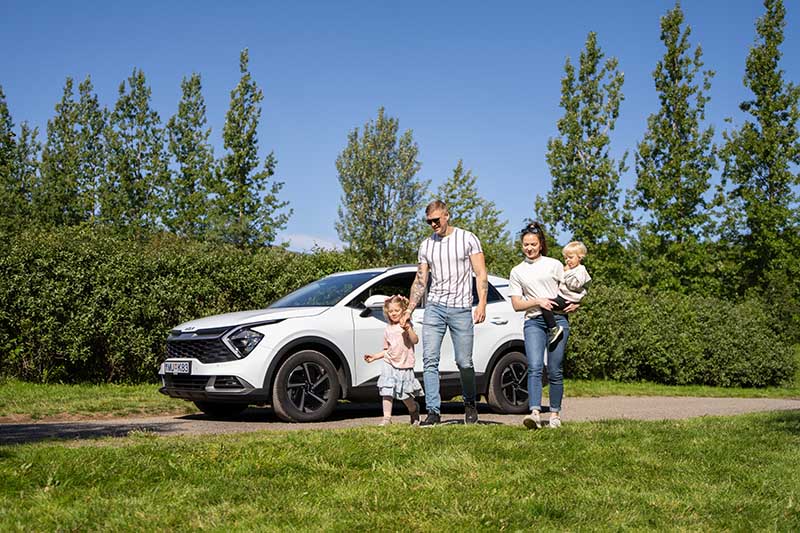
Insurance and protection: what’s covered—and what isn’t
All Holdur rentals include:
- Collision Damage Waiver (CDW)
- Personal Accident Insurance
- Theft Protection
Optional upgrades for peace of mind on Iceland’s unique roads:
- Super CDW: Reduces excess significantly
- Gravel Protection: Covers windscreen and glass from stone chips
- Sand and Ash Damage Waiver: Protection during severe sand/ash events
- Premium Cover (Zero Excess): Combines key protections and reduces excess to zero
Important exclusions across Iceland:
- Damage from driving into or across rivers or any waterway is not covered
- Damage to the undercarriage, gears, or driveline from rough use is excluded
- 2WD vehicles on F-roads are prohibited and not insured on those routes
EVs and hybrids: smart, easy, and increasingly popular
Iceland’s charging network is growing fast, with most stations around Route 1 and in towns.
- BEVs (battery electric): Lowest emissions; ideal for shorter road trips with planned charging stops
- PHEVs and HEVs: Extra flexibility on longer or remote routes
- Planning: Know your vehicle’s real-world range, carry the right cables, and plan charges ahead—particularly outside the capital area
- Highlands: EVs are not allowed to drive on F-roads or river crossings; charging is scarce in remote regions
Fuel, charging, and practicalities
- Fuel stations: Widely available on Route 1; many are self-service with card and smartphone payments
- Charging: Mix of Tesla Superchargers (Tesla only), high-power fast chargers, and standard chargers. Fast charging can get you close to full in ~30 minutes; standard charging can take several hours
- Keep topped up: In winter or when heading into sparse areas, refuel or recharge before you need to
Parking without the stress
- Towns and cities: Park only in marked bays. Check zone rules; many areas in Reykjavik and Akureyri are paid or time-limited
- Attractions: Use official car parks. Fees vary and help protect fragile landscapes. Many sites now offer EV charging bays
- Motorhomes and campervans: Overnight only in designated campsites—not lay-bys or roadside areas
- Payment: Apps, card, and sometimes cash are accepted; signage is clear at most locations
See also: What You Need to Know Parking in Iceland and comprehensive guide to parking in Reykjavík.
Tolls and tunnels: the one to know
- Vaðlaheiðargöng tunnel (near Akureyri on Route 1): Pay online or via the app within 24 hours of passing through. There’s a free, longer alternative via Víkurskarð if you prefer to avoid the toll.
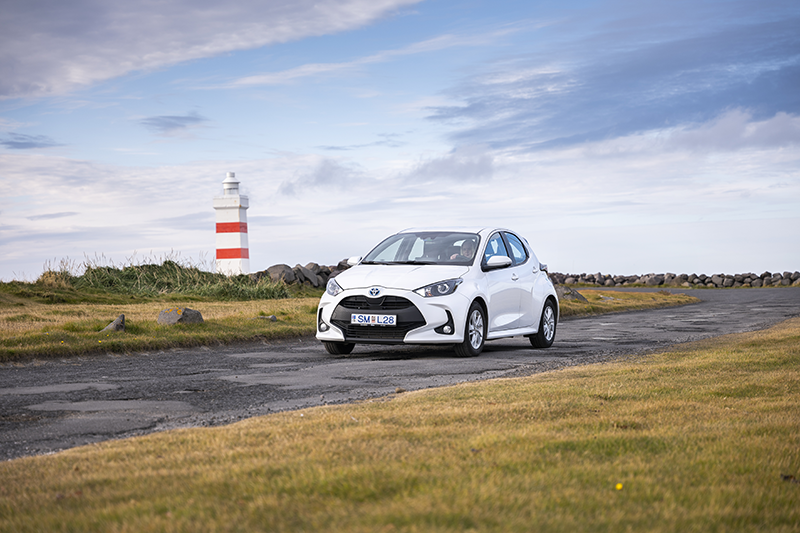
How to plan a safe route—step by step
1) Outline your must-see stops and daily driving time in daylight
2) Choose the vehicle to match your roads (paved vs F-roads) and season
3) Check weather (en.vedur.is) and roads (road.is) the evening before and morning of travel
4) Identify refuel/charging points and safe pull-outs in advance
5) Share your plan with a travel companion or your accommodation
6) Be ready to change plans—safety first if the forecast turns
Emergency readiness and contacts
- If you break down: Pull well off the road, switch on hazards, and call for assistance
- Holdur Road Assistance:
-
- Cars: +354 419 2400
- Campers/motorhomes: +354 840 9853
- Office hours enquiries: +354 461 6000
- Out-of-hours emergencies: +354 840 6000
- National emergency number: 112 (police, fire, ambulance)
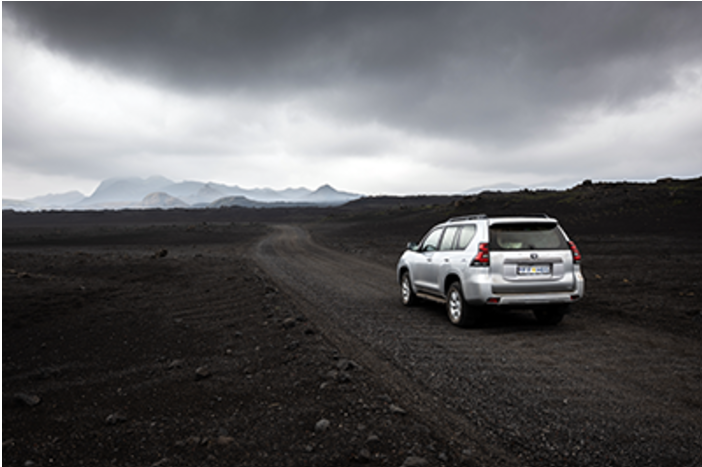
Frequently asked questions
Do I need an international driving permit in Iceland?
Most travellers can drive with their valid domestic licence. You must have held it for at least one year. An IDP is not required for many nationalities, but check your country’s rules before travel.
Is a 4x4 necessary in winter?
It’s strongly recommended if you’ll leave urban areas or drive outside the main highway network. Holdur fits studded winter tyres on all cars from 1 Nov to 15 Apr.
Can I drive the Ring Road in winter?
Yes, it’s usually open and regularly cleared, but sections—especially in the north and east—can be icy or windy. Always check road.is and en.vedur.is and be willing to pause travel.
Are F-roads open year-round?
No. F-roads are typically open only in summer and require a suitable 4x4. River crossings are common; damage from water is never insured.
What’s the speed limit in Iceland?
90 km/h on paved rural roads, 80 km/h on gravel, and 30–50 km/h in urban areas. In two-lane roundabouts, the inner lane has right of way.
Can I turn right on a red light?
No—unless a sign specifically permits it, which is rare.
Where should I hire a car: Reykjavik or Keflavik Airport?
Both are convenient. Keflavik International Airport car rental is ideal if you want to set off straight away. Renting a car in Reykjavik works well if you’re spending a few days in the city first.
What should I pack in the car in winter?
Warm layers, gloves, hats, snacks, water, a torch, a phone charger, and an ice scraper. Keep fuel or charge levels comfortable—don’t run low in remote areas.
Final tips before you set off
- Match your car to your plan: Standard car for paved routes, 4x4 for Highlands or winter touring
- Build a check-in routine: Weather (en.vedur.is), roads (road.is), daylight hours, and wind speed
- Drive defensively: Slower speeds, longer gaps, and smooth steering and braking
- Respect closures and nature: Stay on marked roads, park in designated areas
- Book early: Summer fleets and popular 4x4s sell out fast
Ready to go? Book your car hire in Iceland with Holdur at Keflavik International Airport or rent a car in Reykjavik, and set yourself up for a safe, memorable road trip all year round.





